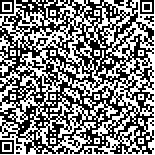| 摘要: |
| 国家免疫规划是一项系统性的战略工
程,在中国主要依托基层医疗机构开展。为探
究预防接种门诊空间环境对使用者的影响、促
进疫苗接种过程的医疗安全与质量、改善免疫
服务的就诊体验,本研究以预防接种门诊等候
空间为切入点,选取4所空间环境差异显著的
机构,在所有家庭均被医务人员告知接种后需
留观30 min的前提下,通过对314组家庭疫苗接
种全过程的非干预性行为观察,以“留观时长”
为关键测度进行统计,结合现场条件解析空间
环境与留观依从性的关联性,旨在为改善公共
卫生服务环境提供实证依据。结果表明,本次
研究中留观合格率整体偏低,留观空间的拥挤
度、声压级、照度三项指标与留观时长存在显著相关性。本研究拓展了等候空间中“满意度”“舒适度”等主观感受之外的行为测度,强化了等候
空间影响等候体验的认知。 |
| 关键词: 循证设计 环境行为 预防接种门诊 等候空间 基层医疗设施 |
| DOI:10.13791/j.cnki.hsfwest.20240401 |
| 分类号: |
| 基金项目:国家自然科学基金面上项目(52378019);教育部人
文社科青年基金(22YJCZH005) |
|
| Evidence based design of correlation between spatial environment of vaccination clinicsand medical observation compliance |
|
BAI Xiaoxia,LIU Yu,YE Kunfei,XIANG Xingwei
|
| Abstract: |
| The National Immunization Program is a systematic strategic project that mainly relies on
primary healthcare facilities in China. Each child will take nearly thirty doses of vaccine, therefore,
the vaccination clinics is a repeatedly experienced public health environment. Although people are
aware of the 30-minute medical observation requirement, behavior observation shows that people’s
staying time is relatively short and the pass rate for observation is low. To explore the impact of spacial
environment of vaccination clinics on users, promote medical safety and quality during the vaccination
process, and improve the medical experience of immunization services, this study takes the waiting
space of vaccination clinics as the entry point because wating takes the longest time during the entire
process. Previous studies have conducted research on hospital observation spaces, but most of them rely
on subjective measures such as satisfaction and comfort in waiting spaces through questionnaires and
interviews. There is a gap of empirical evidence linking the spatial environment to post-vaccination
observation compliance. However, these subjective measurements are not applicable in this study due to
the Hawthorne effect, which states that people may make adjustments to their behavior when realizing
they are the subject of study. This study transcends the collection of subjective feedback and focuses on the
relationship between “environment as input and behavior as output”, with external behavioral decisions
as the ultimate influencing outcome. Therefore, non-interventional behavioral observation has become
the first choice for research. This study selected four institutions with significant spatial environment
differences as the research object in Wuhan and mapped the floor plan. Researchers observed 314 families
randomly throughout the entire vaccination process, using “post-vaccination observation time” as the
key measure for statistics. At the same time, physical environmental factors are synchronously collected,
including illumination, sound pressure level, and number of people on site. A pre-designed observation
record form was used to record the key time modes and other more detailed behavior information during
the process. Data collection lasted for two months. Combining with on-site conditions, the study analyzes
the correlation between spatial environment and observation compliance, aiming to provide empirical
evidence for improving the public health service environment. The result reveals a low overall compliance
rate with the 30-minute observation protocol, with only an average of 18.15% of families meeting the
criteria across the four clinics. Significant correlations were found between the three indicators of spatial
crowding, sound pressure level, and illumination in the observation space and the duration of observation.
Specifically, increased crowding and noise levels were significantly associated with reduced observation
times, while higher illumination was positively correlated with longer observation durations. Regression
analysis takes observation duration as the dependent variable and various factors as the predictor
variables. The significance level of the regression model is 0.024, indicating that the overall predictive
power of the model is significant and has certain predictive value. However, the R-squared and F-squaredvalues are both low, which means that the explanatory power of spatial environment on changes in observation duration is not strong, and improving observation
compliance requires intervention from more perspectives. This study discussed the relationship between each factor and the current design indicators, and concluded
that the recommended area value given by the current specifications is too small. Each vaccination clinic should estimate the area of observation space based on daily
reception volume. When the number of people vaccinated in a single day is less than 40, the observation area should not be less than 30 square meters; The number
of people vaccinated between 40~60 per day, and the observation area should not be less than 40 square meters; When the number exceeds 60, the observation
area should not be less than 50 square meters. In addition, results does not show correlation between hot and humid environments and observation compliance, this
finding should still be approached with great caution. Frontline staff feedback does not exclude possibility that inadequate thermal comfort may affect observation
compliance in serious winter and summer seasons. This study uniquely contributes to the vaccination clinic design field by providing empirical evidence that the
spatial environment may influence post-vaccination ovservation compliance. Furthermore, this study expands the behavioral measurement beyond subjective
feelings such as satisfaction and comfort in waiting spaces, and strengthens the understanding that waiting spaces affect the waiting experience. |
| Key words: evidence-based design environment and behavior vaccination clinics waiting space primary healthcare facilities |


